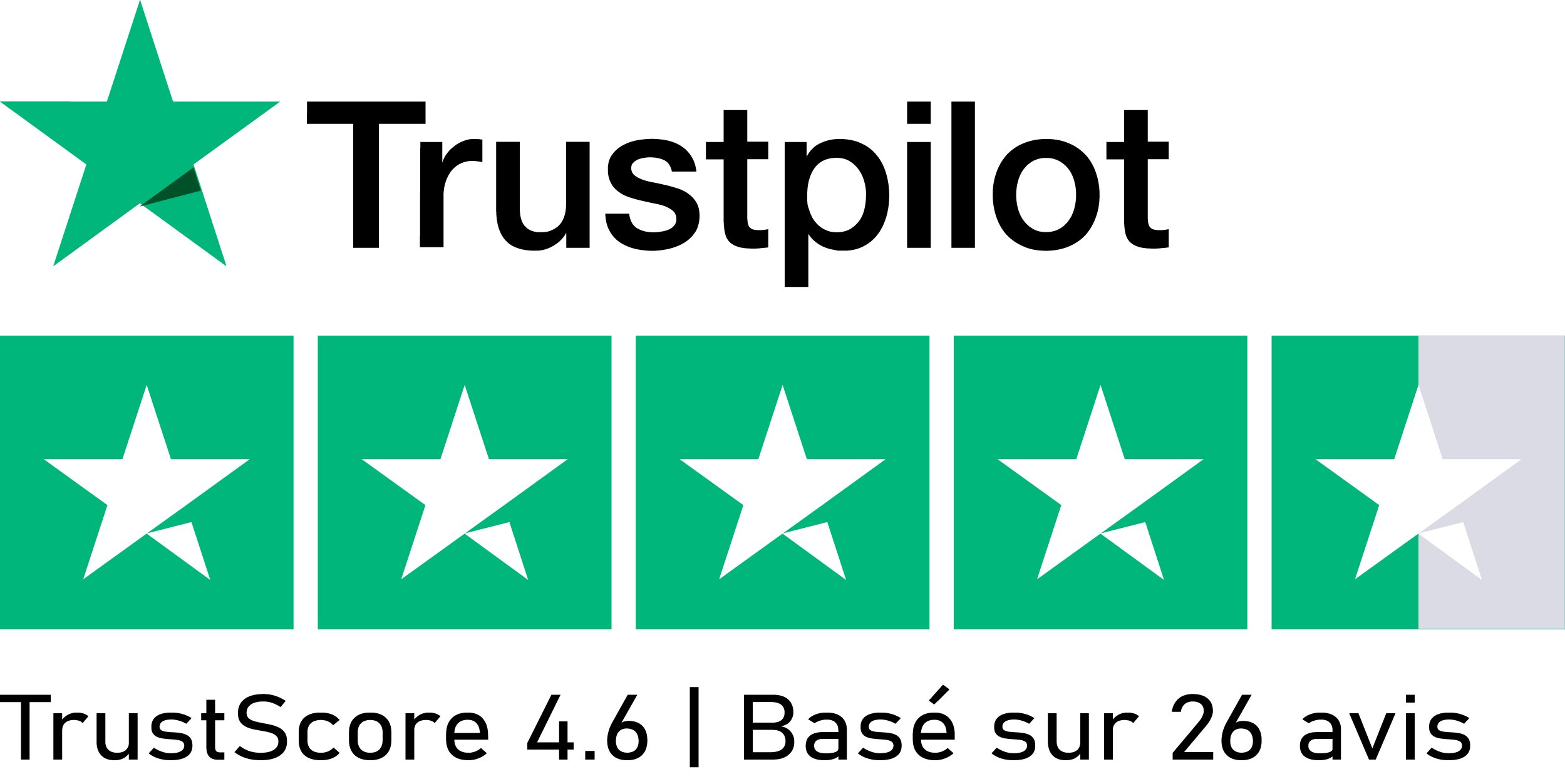Prolonged sitting causes of musculoskeletal disorders (MSD) and increases the risk of cardiovascular disease, type 2 diabetes, obesity and cancers. Aporia® revolutionizes the sitting posture, by reintroducing the movement, allowing users to move naturally throughout the day, thus preventing these deleterious effects.
Gil Ayache – Blue Lift – 21 April 2024
Summary : The prolonged sitting position, defined by immobility of the more than 2 consecutive hours, has become a major public health issue. With the rise of telework and the increased use of screens, more and more people are involved, leading to musculoskeletal disorders (MSD) and low back pain, the main causes of the compensation for occupational disease in France. In the long term, this sedentary lifestyle increases the risk of cardiovascular disease, type 2 diabetes, obesity, cancers, and premature death, as many of the priorities of the national policy of prevention.
The recommendations classics issued by the national health organizations recommend regular breaks and the integration of frequent movements. However, these approaches do not solve the fundamental problem of the stillness inherent in the sitting position.It is in this context that the ergonomic sitting Aporia® stands out, offering a true revolution postural. By introducing the natural movement in a sitting position, Aporia® allows users to move without conscious effort throughout the day, thus preventing in a unique way the deleterious effects of physical inactivity.
The dangers of prolonged sitting
What is the prolonged sitting position ?
The prolonged sitting is defined by immobility of the more than two consecutive hours. It is characterized by :
- Low power consumption ;
- A static posture ;
- A constant effort of the muscles to maintain the position1.
With the changing patterns of work, such as the intensive use of computers, the proportion of people spending most of their day in a seated position has doubled between 2000 and 2015 in the european Union2. In France, nearly 40 % of employees working in a sitting position, exposing a large number of them to health risks.
The first consequences : musculoskeletal Disorders (MSD) and low back pain
The harmful effects of prolonged sitting have a rapid onset in the form of musculoskeletal disorders (MSDS). They are the result of an imbalance between the physical abilities of the body and the stresses and strains to which it is exposed3.
These conditions, which affect the muscles, tendons and nerves, are aggravated by postures static extended. The TMS include :
- Low back pain (pain in the lower back) ;
- Cervical pain ;
- Carpal tunnel Syndrome.
They affect both the upper limbs (shoulders, wrists) that the lower limbs (knees) and the spine (neck, back).
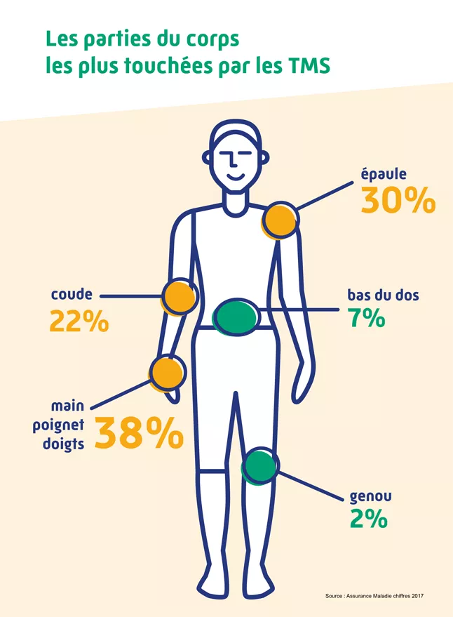
In France, Italy and Spain, the TMS represent the first cause of compensation for occupational disease4. In the medium term, the pain can become chronic, making it difficult to maintain the level of work performance.
In the long-term deleterious effects to the health
The long-term effects of prolonged sitting are even more worrying5. Several studies show that physical inactivity, prolonged, is associated with increased risks of :
- Cardiovascular disease (17% increase in risk of mortality)6 ;
- Type 2 diabetes (increase of 112% of the risk due to insulin resistance)7 ;
- Obesity (accumulation of visceral fat due to inactivity)8 ;
- Cancers (cancers of the breast, colon, and pancreas-related physical activity) ;
- Mental health (stress, anxiety, cognitive difficulties).
The impact of this ? An increase of 49 % the risk of premature mortality9.
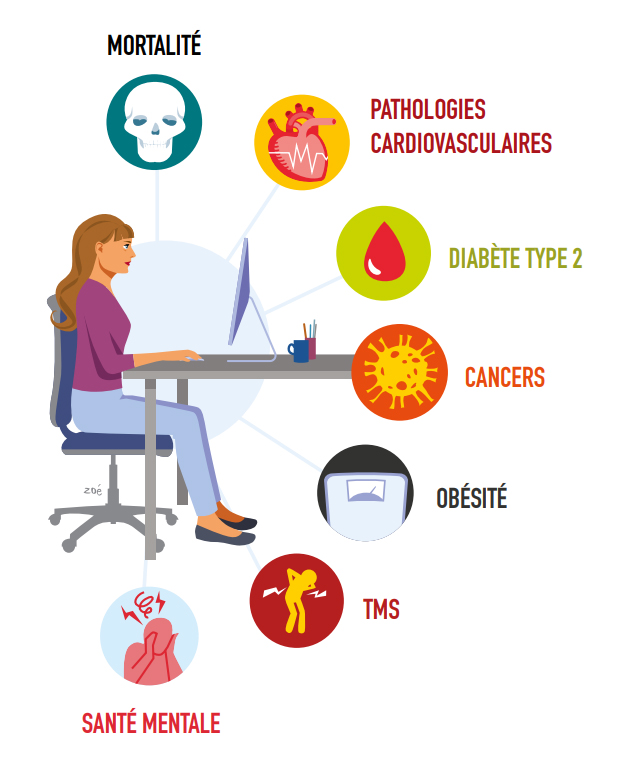
Recommendations classics to counter the effects of the sedentary lifestyle
Incorporate breaks and regular movements
To prevent the effects of prolonged sitting, the experts recommend11 :
- Get up every 30 minutes for a few minutes ' walk ;
- Alternate between sitting and standing all the day long ;
- Take a 10-minute rest every hour.
These recommendations aim to integrate regular movements in daily life. This is illustrated in the case of low back pain by the tagline adopted by the health Insurance Fund at its awareness campaign on prevention : "Back pain ? The right treatment, it is the movement12».
But they are inherently limited in their effectiveness. They do not reconcile mobility of the body and sitting position.
The ergonomics of the workstation
Poor ergonomics at work accentuates the TMS. For example, a bad prolonged sitting causes of lower back pain, tension neck, and visual disturbances related to eye fatigue. It is crucial to rearrange the workspace to reduce this inconvenience13. It is essential to design a work position well-designed, adjusted to the size and needs of each individual, to improve comfort and reduce risk of MSD.
Aporia® : A revolutionary solution for the posture and ergonomics
Traditional analyses of the sitting position is based on a paradigm that opposes the sitting position and mobility. Rather than resign ourselves to this observation, we sought to understand the origin of the problem starting from the standing position, which enables mobility permanently.
The daily experience of the postural balance dynamic
In a standing position, we experience naturally in a dynamic equilibrium. Instinctively, we are swinging in a limited space, forming an inverted cone, without expenditure of energy, or muscle tension. This space is called the "cone of functional economy" or " cone of stability14 ».
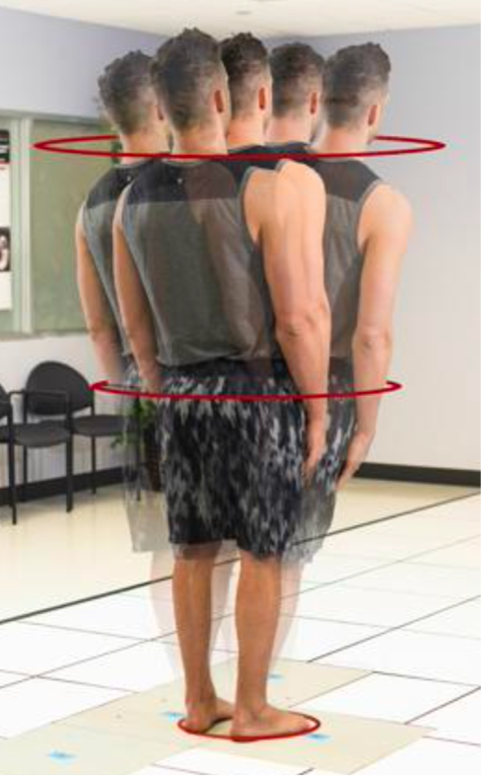
When we go beyond the limits of the cone of stability, we lose the balance and muscle tension appear to restore it. The size of the cone of stability depends on the basis of levitation, defined by the gap between our own two feet. This dynamic balance is provided by the coordination of the joints of the hips and ankles.
The sitting position blocks the mobility
In a sitting position, the mobility is blocked because the joints of the hips, and ankles are constraints. This stillness requires a single equilibrium position : the position of the lotus. Any deviation from this posture causes of disorders of postural that the body can restore its balance, causing tension musculoskeletal repeated that eventually cause postural disorders chronic.
Get out of the paradigm of immobility in a sitting position
The solution to this problem is simple : it is necessary to restore mobility in the hips and ankles in a sitting position. To do this, we designed a structure multiarticulée patented, which forms the backbone of the foundation Aporia® and allows you to :
- Restore a dynamic movement of the body with a curved base.
- Support the micromotion of equilibration with 4 pads articulated that maintain the balance in real time.
- Restore mobility in the hips and anklesallowing regain control natural dynamic balance. This is made possible by support independent of each segment of the body engaged in the movement of the joints.
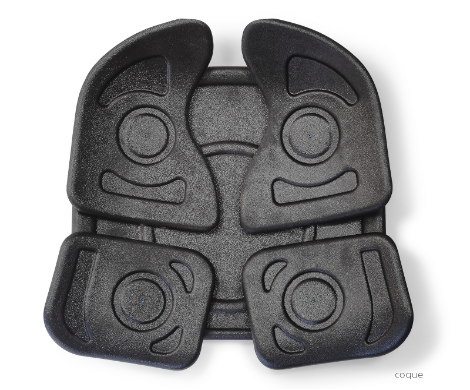

The revolution posture with Aporia®
By giving back to the hips and ankles and their natural mobility, Aporia® creates stability in the movement by entering each movement in a sitting position in a cone of stability.
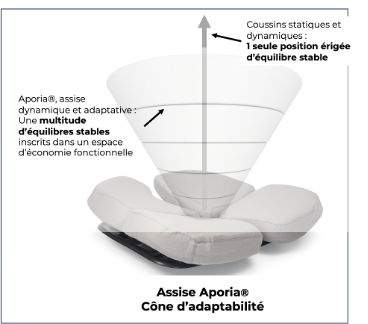
All positions become good postures, free of surges articulo muscle.
But more importantly, this mechanism allows a natural oscillation of the body, with amplitudes of motion larger than in a standing position, because the base of levitation is wider.

Conclusion : An ergonomic solution overall with Aporia®
Aporia® embodies much more than a simple improvement ergonomic : it offers a complete solution for prevent MSD, lower back pain and harmful effects of prolonged sitting. By introducing the movement in the sitting posture, Aporia® allows users to move naturally throughout the day, without conscious effort.
Call to action :
Now, learn how to Aporia® can transform your daily life and improve your well-being at work. Tell MSD and risks associated with a sedentary lifestyle with this ergonomic solution revolutionary. Contact us for more information or to try Aporia® today ! mail : sharon@blueportance.com – phone : 07 83 86 40 61
- "Position extended sitting static in the workplace – Effects on health and tips of best practices – Summary" – european Agency for safety and health at work (EU-OSHA) – 2021 https://osha.europa.eu/sites/default/files/sitting_at_work_721a_fr_rev.pdf ↩︎
- Dito ↩︎
- Understanding the risks of musculoskeletal disorders – April 2024 – Ameli.fr
https://www.ameli.fr/alpes-maritimes/assure/sante/themes/tms/comprendre-troubles-musculosquelettiques#:~:text=Les%20troubles%20musculo–squelettiques(TMS)%20regroupent%20des%20affections%20touchant,les%20membres%20inférieurs%20(genoux). ↩︎ - Overview of facts and figures on the TMS : prevalence, costs and demographics in the EU. the european Agency for safety and health at work (EU-Osha) – 2019. https://osha.europa.eu/sites/default/files/Work_related_MSDs_prevalence_costs_and_demographics_in_EU_summary_FR.pdf ↩︎
- "The postures sedentary at work. Definition, health effects and prevention measures " – INRS – 2024
https://www.inrs.fr/media.html?refINRS=ED%206494 ↩︎ - "The Risks of a Sedentary lifestyle and Physical Inactivity on Health" – July 2024 – CNRS https://sport.cnrs.fr/les-risques-de-la-sedentarite-et-de-linactivite-physique-sur-la-sante/ ↩︎
- Dito ↩︎
- Dito ↩︎
- Why Sitting at a Desk is Bad for You and for the Business ?https://youmatter.world/fr/categorie-economie-business/rester-assis-bureau-consequences-sante-business/ ↩︎
- "The postures sedentary at work" – dito
https://www.inrs.fr/media.html?refINRS=ED%206494 ↩︎ - "Position extended sitting static in the workplace – Effects on health and tips of best practices – Summary" – european Agency for safety and health at work (EU-OSHA) – 2021
https://osha.europa.eu/sites/default/files/sitting_at_work_721a_fr_rev.pdf
↩︎ - "Back pain : with the right treatment, it is the movement ! "– Health insurance – amelie.fr – October 31, 2023
https://www.ameli.fr/alpes-maritimes/assure/sante/themes/lombalgie-aigue/traitement-prevention
↩︎ - A guide to good management practices of the espace de travail a été publié par les services de santé belges : https://www.preventiondestms.be/fr/prevenir-les-tms/position-assise-prolongee ↩︎
- “The standing man : scoliosis and horizontal plane deformity. The best way to understand 3D in orthopedics” – Jean Dubousset – e-memoirs of the National Academy of Surgery, 2012, 11 (3) : 066-070
https://e-memoire.academie-chirurgie.fr/ememoires/005_2012_11_3_066x070.pdf
↩︎ - "A method to quantify the "cone of economy" " – Ram Haddas · Isador H. Lieberman European Spine Journal (2018) 27:1178-1187
https://doi.org/10.1007/s00586-017-5321-2 ↩︎


